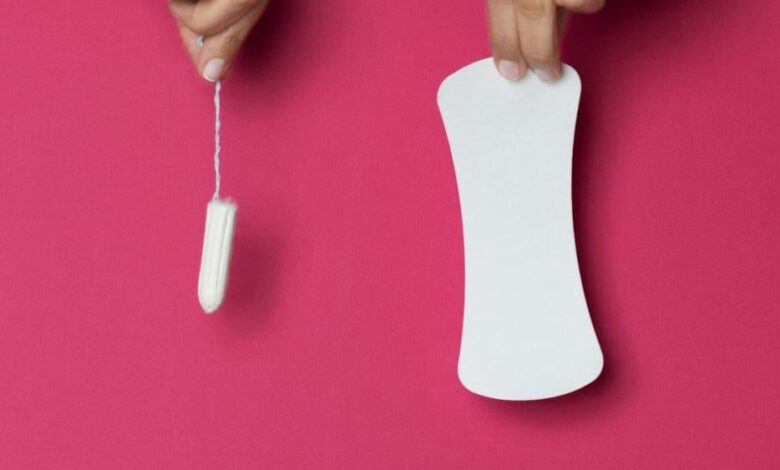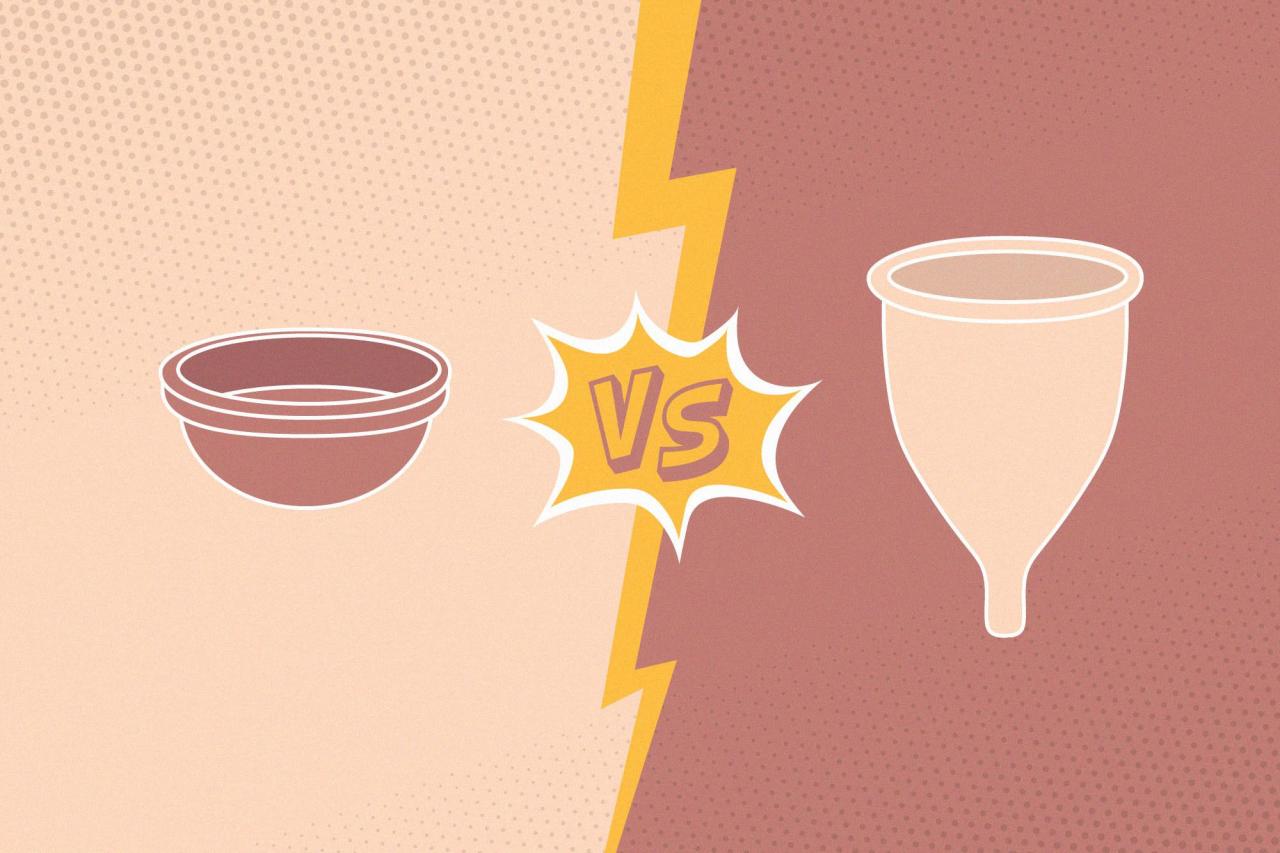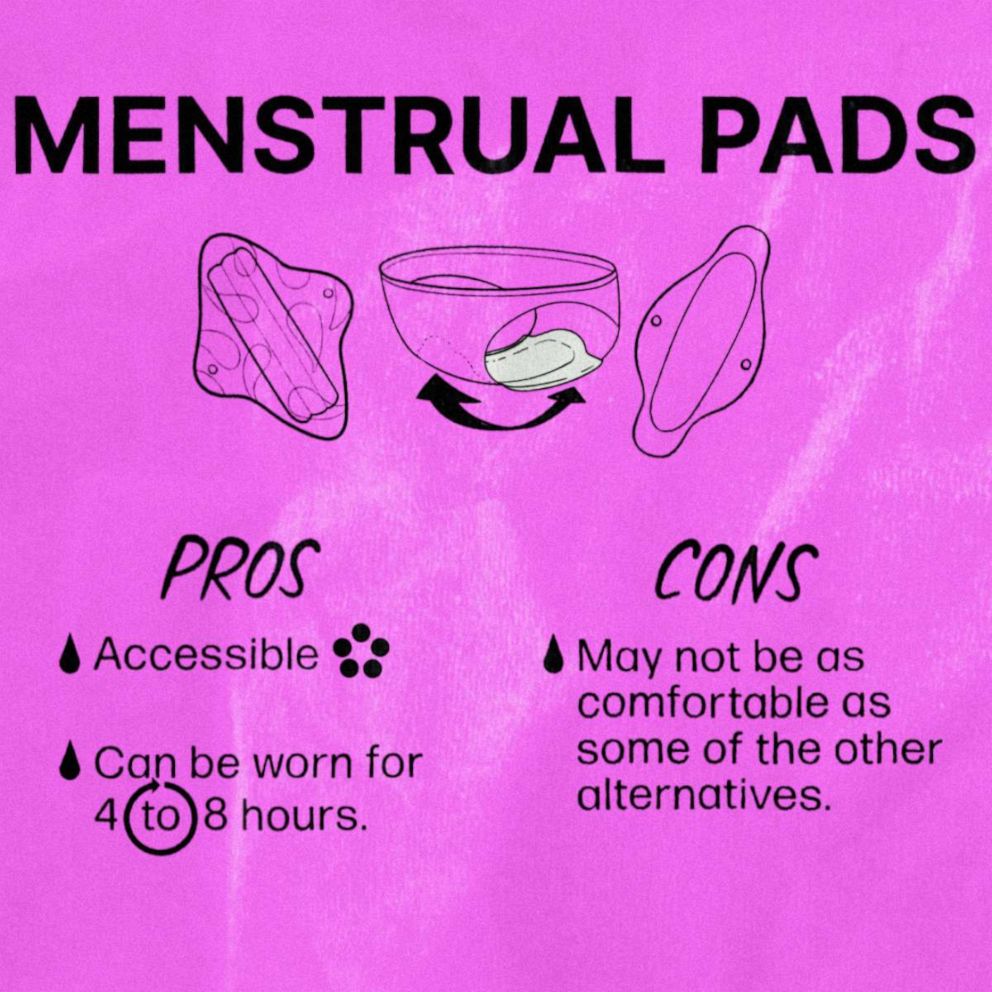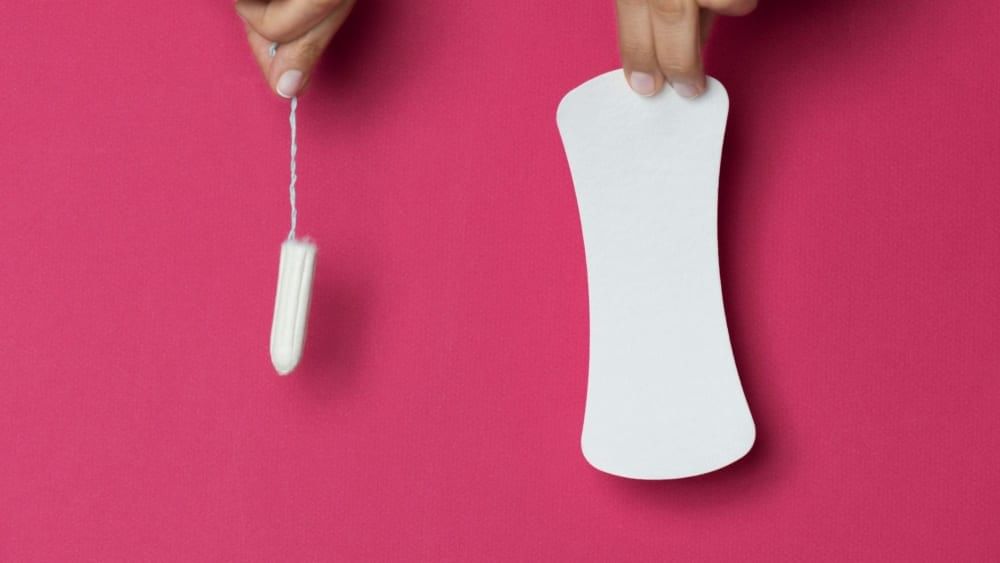
Pads, Tampons, Period Panties A Comparison
Comparison between pads tampons period panties and their pros and cons – Comparison between pads, tampons, period panties and their pros and cons is a crucial conversation for anyone who menstruates. Choosing the right menstrual product can significantly impact comfort, convenience, and overall well-being. This post dives deep into the world of pads, tampons, and period panties, exploring their unique features, advantages, and disadvantages to help you find the perfect fit for your cycle.
We’ll break down the different types of each product, examining materials, absorbency levels, and potential health concerns. We’ll also compare costs, environmental impact, and suitability for various activities and flow levels. By the end, you’ll have a clearer understanding of which product might be best for you, empowering you to make informed choices about your menstrual health.
Pads

Source: pinimg.com
Pads are a widely used menstrual product, offering a familiar and readily available option for managing menstrual flow. They come in a variety of styles and absorbencies, catering to individual needs and preferences. Understanding the different types and their characteristics can help you choose the best pad for your comfort and protection.
Types of Pads
Pads are categorized primarily by their absorbency and length. Regular pads are designed for lighter flow days, while overnight pads offer significantly greater absorbency for nighttime use. Winged pads feature adhesive tabs on the sides that help secure the pad to your underwear, preventing shifting and leakage. There are also specific pads designed for light days, and super plus or ultra pads for heavier flows.
Some brands also offer pads with different features, such as breathable topsheets or curved designs for better fit.
Pad Materials and Their Impact
The materials used in pad manufacturing significantly affect their absorbency, comfort, and environmental impact. Most pads consist of a top layer (often made of cotton or a soft non-woven fabric) designed for comfort and to wick away moisture. The core of the pad is the absorbent layer, typically made from cellulose pulp (wood pulp) or a combination of cellulose and superabsorbent polymers (SAPs).
SAPs are designed to absorb and retain a large volume of fluid. The back layer is usually made of a waterproof plastic film to prevent leakage. The choice of materials influences the pad’s overall softness, breathability, and its ability to manage different flow levels. Pads made with natural, breathable materials might be more comfortable but potentially less absorbent than those with SAPs.
Pros and Cons of Using Pads
Pads offer several advantages. They are widely available, relatively inexpensive, and easy to use. Many women find them comfortable, especially during lighter flow days. However, pads can be bulky and noticeable under clothing, potentially leading to discomfort, especially with heavier flow. Their disposal creates significant waste, contributing to environmental concerns.
Frequent changes are necessary to maintain hygiene and prevent leakage, which can be inconvenient. The cost can add up over time, especially with heavy flow. Finally, some individuals experience skin irritation or allergic reactions due to certain materials used in pad production.
Comparison of Pad Brands
The following table compares three popular pad brands based on absorbency, length, and average price per pack. Note that prices can vary depending on retailer and sales. Absorbency is a subjective measure based on general user feedback and manufacturer claims.
| Brand | Absorbency | Length (cm) | Average Price per Pack |
|---|---|---|---|
| Always | High (varies by type) | 24-26 (varies by type) | $5-8 |
| Kotex | High (varies by type) | 23-27 (varies by type) | $4-7 |
| Stayfree | Medium-High (varies by type) | 22-25 (varies by type) | $4-6 |
Tampons: Comparison Between Pads Tampons Period Panties And Their Pros And Cons

Source: abcnews.com
Tampons are a popular menstrual product offering a discreet and often comfortable way to manage your period. They work by absorbing menstrual blood internally, unlike pads which absorb externally. Understanding the different types available and how to use them safely is crucial for a positive experience.Tampons come in a variety of options, catering to different preferences and needs. The primary differences lie in applicator type and absorbency level.
Tampon Types and Absorbency
The choice between applicator and non-applicator tampons is largely a matter of personal preference. Applicator tampons, as the name suggests, come with a plastic or cardboard applicator to aid insertion. Non-applicator tampons require you to insert the tampon directly using your fingers. Absorbency levels are typically categorized as light, regular, super, and super plus, indicating the amount of menstrual flow the tampon can absorb.
Choosing the correct absorbency is important; using a tampon with too high an absorbency can be uncomfortable and potentially increase the risk of Toxic Shock Syndrome (TSS).
Tampon Insertion and Removal
Correct insertion and removal are vital to prevent discomfort and potential health risks. Imagine a simple diagram: a rounded tampon being gently inserted into the vagina, angled slightly towards the lower back, until fully inserted. Removal is equally straightforward, gently pulling the string to extract the tampon.To insert a tampon, wash your hands thoroughly. If using an applicator tampon, carefully remove the tampon from its wrapper and follow the instructions on the packaging.
Gently insert the applicator into the vagina, angling it slightly towards your lower back. Once fully inserted, remove the applicator. For non-applicator tampons, carefully unfold the tampon and insert it using your fingers, using the same angled approach. After use, gently pull on the string to remove the tampon. Dispose of the used tampon in a sanitary bin.
Remember to change tampons regularly, following the product instructions and your flow.
Pros and Cons of Tampon Use
Tampons offer several advantages, but also come with some drawbacks. Let’s weigh them up:
| Pros | Cons |
|---|---|
| Discreet and comfortable for many users. | Can cause dryness or discomfort if left in too long. |
| Allows for participation in various activities without restriction. | Requires regular changing, potentially inconvenient depending on flow. |
| Wide range of absorbencies to suit different flows. | Potential risk of Toxic Shock Syndrome (TSS), though rare with proper use and hygiene. |
| Generally less bulky than pads. | Can be more expensive than pads, depending on brand and quantity. |
Toxic Shock Syndrome (TSS) and Prevention
TSS is a rare but serious bacterial infection. While linked to tampon use, it is crucial to understand that it’s preventable with proper hygiene and usage practices. Always use the lowest absorbency tampon suitable for your flow, change tampons regularly (at least every 4-8 hours), and wash your hands thoroughly before and after insertion and removal. If you experience any symptoms such as high fever, vomiting, diarrhea, muscle aches, or a sunburn-like rash, seek immediate medical attention.
Period Panties
Period panties, also known as menstrual underwear, are a reusable and increasingly popular alternative to traditional menstrual products like pads and tampons. They offer a discreet and comfortable way to manage your period, and are gaining traction for their convenience and eco-friendliness. This modern approach to menstrual health provides a unique set of advantages and disadvantages worth exploring.
Choosing between pads, tampons, and period panties involves weighing comfort, convenience, and environmental impact; each has its own set of pros and cons. It’s all about finding what works best for your body and lifestyle, much like finding effective management strategies for other conditions. For example, learning about strategies to manage Tourette syndrome in children highlights the importance of personalized approaches.
Similarly, the “best” menstrual product is the one that best suits an individual’s needs, so experimentation is key to finding your perfect fit.
Types and Absorbency Levels of Period Underwear
Period panties come in a variety of styles and absorbencies, catering to different flow levels and personal preferences. You’ll find options ranging from light absorbency, suitable for light flows or spotting, to heavy absorbency, designed to handle heavier menstrual days. Styles vary widely, mirroring typical underwear styles like thongs, bikinis, hipsters, and boyshorts. Some brands even offer high-waisted options for added coverage and support.
The absorbency is usually indicated on the packaging or product description, often categorized as light, moderate, heavy, or overnight. The choice depends entirely on individual needs and flow.
Materials and Absorption Mechanisms in Period Panties
Most period underwear utilizes a multi-layered system to effectively absorb and retain menstrual blood. The outer layer is typically made from soft, breathable fabrics like cotton or modal, providing comfort against the skin. The middle layer is the core of the absorption system, usually consisting of a highly absorbent material like microfiber or a blend of microfiber and other materials designed to wick away moisture.
This layer often incorporates a waterproof layer to prevent leaks. The inner layer, closest to the skin, is often made of a soft, breathable fabric to provide a comfortable and hygienic experience. The materials work together to draw the menstrual flow away from the skin, locking it within the absorbent core and preventing it from leaking through.
Advantages and Disadvantages of Period Panties Compared to Pads and Tampons
Compared to pads and tampons, period panties offer several compelling advantages. Their most significant advantage is comfort; many users report feeling less bulk and irritation compared to traditional methods. Convenience is another key benefit; no more fumbling with applicators or worrying about changing products throughout the day. They also boast significant environmental advantages, as they are reusable, reducing waste compared to disposable products.
However, period panties also have some drawbacks. The initial cost can be higher than a comparable supply of pads or tampons. Washing and drying them requires time and effort, and they may not be suitable for everyone, particularly those with very heavy flows or who prefer the feeling of tampons. Additionally, while many brands boast leak-proof designs, the risk of leakage remains, especially during heavier flow days or with less absorbent options.
Washing and Care Instructions for Period Panties
Washing and care instructions can vary slightly between brands, but the general principles remain consistent. Before the first use, most brands recommend washing the period panties to remove any manufacturing residue. After each use, rinse the underwear thoroughly under cold water to remove excess blood. Many brands recommend hand washing for optimal care, although some can be machine washed on a gentle cycle in cold water.
Avoid using bleach or fabric softener, as these can damage the absorbent layers. Air drying is generally preferred to prevent damage to the fabric and maintain absorbency. Always refer to the specific care instructions provided by the individual brand.
Choosing between pads, tampons, and period panties involves weighing comfort, convenience, and environmental impact – a very personal decision! It’s fascinating how such individual choices contrast with broader health concerns, like the possibility of early dementia detection. Did you know research suggests that, as reported in this interesting article, can eye test detect dementia risk in older adults ?
Returning to period products, finding the right one truly depends on your lifestyle and preferences.
- Brand A: Hand wash or machine wash cold, gentle cycle. Air dry. Do not bleach or use fabric softener.
- Brand B: Rinse thoroughly after each use. Machine wash cold, gentle cycle. Tumble dry low or air dry.
- Brand C: Hand wash recommended. Air dry. Do not use harsh detergents.
Comparative Analysis

Source: mscwlns.co
Choosing the right menstrual product can feel like navigating a minefield! Pads, tampons, and period panties all offer different levels of comfort, convenience, and environmental impact. Let’s break down the pros and cons of each to help you find your perfect match.
Cost Per Cycle
The cost of managing your period varies significantly depending on the product you choose. Pads are generally the most affordable option per unit, especially when buying in bulk. Tampons can be similarly priced, though the cost can increase with higher absorbency levels. Period panties, while having a higher upfront cost, offer long-term savings as they are reusable. Consider the initial investment versus the ongoing cost of replacements when making your choice.
For example, a pack of 20 regular pads might cost around $5, while a comparable number of tampons could range from $6-$8. A pair of good quality period panties, on the other hand, might cost $20-$30, but they can last for several years with proper care.
Convenience and Comfort
Convenience is a key factor for many people. Pads are easily accessible and require minimal preparation. Tampons offer a higher degree of discretion and freedom of movement, particularly for activities like swimming or exercise. Period panties, while convenient in their reusability, require washing and drying, adding a step to the process. Comfort levels are subjective.
Some find pads bulky and potentially irritating, while others find tampons uncomfortable or even painful to insert. Period panties, with their soft, breathable fabric, are often praised for their comfort, but the feeling of wetness might be a drawback for some.
Environmental Impact, Comparison between pads tampons period panties and their pros and cons
The environmental impact of menstrual products is a growing concern. Pads and tampons generate significant waste, contributing to landfill overflow. The manufacturing process and packaging also impact the environment. Period panties, being reusable, drastically reduce waste. However, the manufacturing process of period panties still has an environmental footprint, though generally less than disposable options.
The washing and drying process also uses energy and water. Choosing organic cotton period panties and washing them efficiently can minimize this impact.
Absorbency Levels
Absorbency varies widely across product types and individual brands. Pads and tampons come in a range of absorbency levels, from light to super plus, allowing users to choose the best option for their flow. Period panties also vary in absorbency, with different styles designed for light, moderate, or heavy flows. It’s crucial to select a product with sufficient absorbency to avoid leaks and discomfort.
Choosing the wrong absorbency can lead to embarrassing accidents or a feeling of insecurity. For heavy flow days, consider using higher absorbency pads or tampons, or period panties specifically designed for heavy flow.
Best Use Cases
| Product Type | Pros | Cons | Best Use Cases |
|---|---|---|---|
| Pads | Affordable, readily available, easy to use | Bulky, can be less comfortable, generates waste | Everyday use, light to moderate flow, overnight use (with appropriate absorbency) |
| Tampons | Discreet, allows for swimming and exercise, good for heavy flow | Can be uncomfortable or painful to insert, risk of Toxic Shock Syndrome (TSS), generates waste | Swimming, exercise, heavy flow, situations requiring discretion |
| Period Panties | Comfortable, reusable, eco-friendly, reduces waste | Higher upfront cost, requires washing and drying, may not be suitable for all flow levels | Everyday use, light to moderate flow (depending on absorbency), overnight use (with appropriate absorbency) |
Addressing User Concerns and Preferences
Choosing the right menstrual product is a deeply personal decision, influenced by a variety of factors beyond just managing your flow. Understanding common concerns and aligning product choice with individual preferences is key to a comfortable and confident period experience. This section will explore these concerns and offer guidance in making the best choice for you.
Leakage Concerns and Solutions
Leakage is a major concern for many menstruators, regardless of the product used. Pads, for example, can shift or become saturated, leading to leaks, especially during heavier flow days or with increased activity. Tampons, while generally effective, can also leak if not changed frequently enough or if the wrong absorbency is used. Period panties, although designed for leak protection, might not be sufficient for very heavy flows or overnight use.
To mitigate leakage, consider using higher absorbency products during heavier flow days, changing products more frequently, and using backup protection, such as a pad with a tampon or period panties with a liner. Choosing the right size and fit for both tampons and period underwear is crucial for preventing leaks. For example, a poorly fitting tampon can lead to leakage, whereas ill-fitting period underwear may not effectively contain menstrual fluid.
Irritation and Allergic Reactions
Irritation and allergic reactions are common complaints associated with menstrual products. Some individuals are sensitive to the materials used in pads and tampons, such as dyes, fragrances, or certain types of cotton. These can cause itching, rashes, or other uncomfortable symptoms. Similarly, some period underwear fabrics might cause irritation for certain individuals. To minimize irritation, opt for unscented, hypoallergenic products made from natural materials like organic cotton.
Regularly changing pads and tampons, and choosing breathable period underwear, can also help prevent irritation. If irritation persists, consulting a gynecologist is advisable to rule out any underlying conditions. For example, individuals with sensitive skin might find that organic cotton tampons cause less irritation than those with added fragrances.
Disposal and Environmental Impact
The environmental impact of menstrual product disposal is a growing concern. Pads and tampons generate significant waste, contributing to landfill pollution. While some brands offer biodegradable or compostable options, these aren’t always readily available or affordable. Period panties, on the other hand, are reusable and washable, significantly reducing waste. To minimize your environmental impact, consider switching to reusable menstrual products, such as period panties or menstrual cups.
Properly disposing of disposable products is also important; follow local guidelines for sanitary waste disposal. For example, opting for a menstrual cup reduces waste by an estimated 11,000 disposable products over a decade.
Influence of Individual Preferences on Product Choice
Activity level, flow intensity, and personal comfort are key factors to consider when choosing a menstrual product. Individuals with high activity levels might find tampons or menstrual cups more convenient than pads, as they offer greater freedom of movement. Those with heavy flows may need to use higher absorbency products or a combination of methods. Personal comfort preferences vary greatly; some prefer the familiarity of pads, while others appreciate the discretion of tampons or the comfort and security of period underwear.
For instance, an athlete might find tampons ideal for their training, while someone who prefers a low-maintenance approach might opt for period underwear.
Flowchart for Menstrual Product Selection
Choosing the right product can feel overwhelming, so here’s a simple flowchart to help guide your decision:
Start
|
-------------------------------------
| |
Heavy Flow?
Light/Moderate Flow?
| |
V V
Consider Tampons/Cup/High Absorbency Pads Consider Pads/Tampons/Cup/Period Panties
| |
V V
High Activity Level?
High Activity Level?
| |
V V
Tampons/Cup Recommended Pads/Tampons/Cup/Period Panties
| |
V V
Consider Comfort and Personal Preference Consider Comfort and Personal Preference
| |
V V
Choose Product Choose Product
| |
-------------------------------------
|
End
Final Conclusion
Ultimately, the best menstrual product is the one that best suits your individual needs and preferences.
Whether you prefer the familiarity of pads, the discretion of tampons, or the eco-friendly convenience of period panties, understanding the pros and cons of each option is key. Remember to consider your flow, activity level, comfort preferences, and environmental concerns when making your decision. Experimenting with different products may be necessary to find your perfect match. Happy periods!
FAQ Insights
Can I use period panties for overnight protection?
It depends on the absorbency level of the period panties and your flow. Some high-absorbency period panties are suitable for overnight use, but it’s always best to err on the side of caution and use a backup pad if you’re a heavy bleeder.
Are tampons safe?
Tampons are generally safe when used correctly, but there’s a risk of Toxic Shock Syndrome (TSS), a rare but serious bacterial infection. Change your tampon regularly (every 4-8 hours), use the lowest absorbency needed, and be aware of the symptoms of TSS (high fever, vomiting, diarrhea, rash).
How often should I change my pads?
Change your pads every 4-6 hours, or more frequently if needed, especially during heavy flow. Leaving a pad in for too long can increase the risk of infection and odor.
How do I wash period panties?
Rinse your period panties immediately after use and wash them separately in cold water. Avoid using fabric softener and air dry them to extend their lifespan. Check the specific care instructions provided by the brand.
